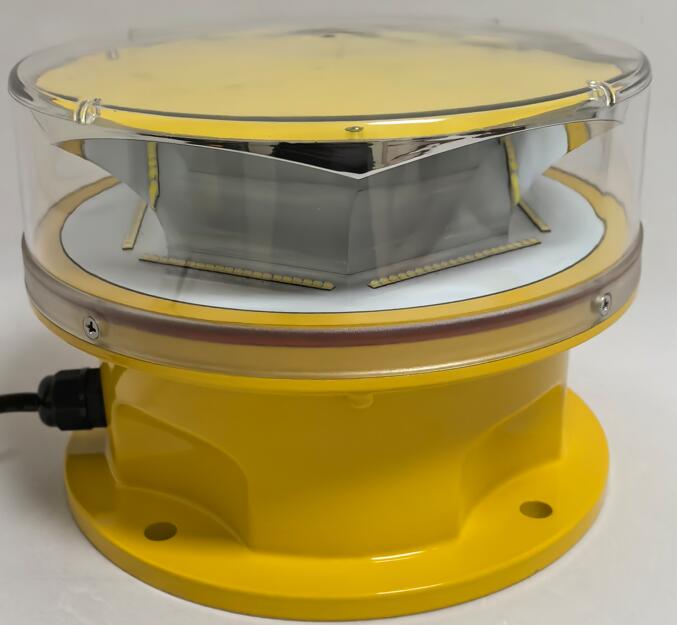Cell Tower Obstruction Light: Safeguarding Airspace Around Communication Giants
As telecommunication networks expand to meet growing connectivity demands, cell towers are becoming taller and more numerous. These towering structures, while essential for seamless communication, pose significant risks to low-flying aircraft. To mitigate these hazards, cell tower obstruction lights are installed to enhance visibility and ensure aviation safety. This article explores their importance, types, technological advancements, regulatory standards, and future trends.
Why Cell Tower Obstruction Lights Are Essential
Cell towers, often exceeding 200 feet (61 meters) in height, must comply with aviation safety regulations to prevent collisions. Obstruction lights serve as:
Visual Warnings: Alert pilots to the presence of tall structures, especially in low-visibility conditions.
Regulatory Compliance: Mandated by aviation authorities worldwide to minimize airspace hazards.
Risk Mitigation: Reduce the likelihood of accidents involving helicopters, small aircraft, and drones.
Without these lights, pilots navigating at low altitudes—particularly during emergencies, medical evacuations, or surveillance missions—could face severe dangers.
Types of Cell Tower Obstruction Lights
Different lighting systems are used based on tower height, location, and aviation authority requirements. The primary categories include:
1. Low-Intensity Obstruction Lights (L-810)
Application: Towers below 150 feet (45 meters).
Characteristics: Steady-burning red lights.
Best For: Rural or low-traffic airspace areas.
2. Medium-Intensity Obstruction Lights (L-864/L-865)
Application: Towers between 150–500 feet (45–152 meters).

Characteristics:
Type A (White Flashing): Used in daytime and twilight.
| cell tower obstruction light |
Type B (Red Flashing/Steady): Used at night.
Best For: Urban and suburban cell towers.
3. High-Intensity Obstruction Lights (L-856/L-857)
Application: Towers exceeding 500 feet (152 meters).
Characteristics: Bright white strobes visible for miles.
Best For: Skyscraper-mounted antennas and ultra-tall communication towers.
4. Dual Lighting Systems
Combine red lights for nighttime and white strobes for daytime.
Ensures 24/7 visibility under all weather conditions.
Technological Innovations in Cell Tower Obstruction Lighting
Advancements in lighting technology have improved efficiency, durability, and sustainability. Key developments include:
1. LED Adoption
Benefits:
Energy Efficiency: Consumes up to 80% less power than traditional lighting.
Longevity: Lasts 50,000–100,000 hours, reducing maintenance.
Brightness: High luminosity for better visibility.
2. Solar-Powered Systems
Ideal for remote cell towers without grid access.
Reduces carbon footprint and operational costs.
3. Smart Monitoring & Automation
Remote Diagnostics: Detects failures and sends alerts for timely repairs.
Adaptive Brightness: Adjusts light intensity based on ambient conditions.
4. Radar-Activated Lighting (RAL)
Only activates when aircraft are detected nearby.
Minimizes light pollution in residential areas.
Regulatory Standards for Cell Tower Obstruction Lights
Global aviation authorities enforce strict guidelines to ensure uniformity and effectiveness. Key regulations include:
1. FAA (Federal Aviation Administration) – AC 70/7460-1L
Defines light intensity, color, and flash rates for U.S. structures.
Requires dual lighting for towers above 700 feet (213 meters).
2. ICAO (International Civil Aviation Organization) – Annex 14
Sets global standards for obstruction lighting.
Mandates white strobes for daytime and red lights for nighttime.
3. CAA (UK Civil Aviation Authority) – CAP 168
Specifies lighting requirements for UK telecommunication towers.
4. EASA (European Union Aviation Safety Agency)
Ensures compliance across European airspace.
Non-compliance can result in fines, forced tower modifications, or even decommissioning.
Challenges in Cell Tower Obstruction Lighting
Despite technological progress, several challenges persist:
1. Light Pollution Complaints
Bright strobes can disturb nearby residents.
Solutions:
Directional lighting (focusing beams upward).
Radar-activated systems (reducing unnecessary illumination).
2. Harsh Environmental Conditions
Extreme weather (storms, ice, UV exposure) can damage lights.
Solutions:
Corrosion-resistant materials (e.g., marine-grade aluminum).
Heating elements for icy climates.
3. Maintenance Difficulties
High-altitude repairs require specialized crews and equipment.
Solutions:
Modular designs for easy replacement.
Predictive maintenance via IoT sensors.
Future Trends in Cell Tower Obstruction Lighting
The industry is evolving with new innovations:
1. AI-Integrated Lighting Systems
Predictive analytics to optimize performance.
Automated fault detection for proactive maintenance.
2. Enhanced Durability
Graphene-coated LEDs for longer lifespan.
Self-cleaning lenses to maintain visibility.
3. Drone-Compatible Lighting
As drone traffic increases, obstruction lights may incorporate UV or IR signals for UAV detection.
4. Green Energy Solutions
Wind-powered lights for off-grid towers.
Energy-harvesting technologies to further reduce reliance on external power.
Cell tower obstruction lights are a non-negotiable safety feature, protecting both aviation and telecommunication infrastructure. With advancements in LED technology, smart monitoring, and eco-friendly designs, these systems are becoming more efficient and sustainable.
As 5G expansion and urban densification drive the construction of taller cell towers, the role of obstruction lighting will only grow in importance. By adhering to global regulations and embracing cutting-edge innovations, the telecom industry can ensure safe skies for generations to come.
Whether through solar-powered solutions, radar activation, or AI-driven maintenance, the future of cell tower obstruction lights is bright—ensuring safety without compromising efficiency.
